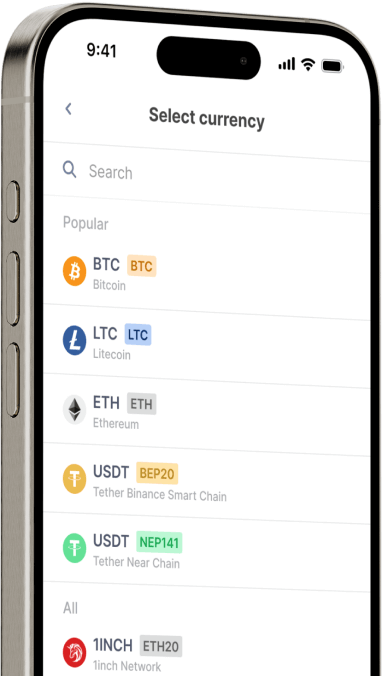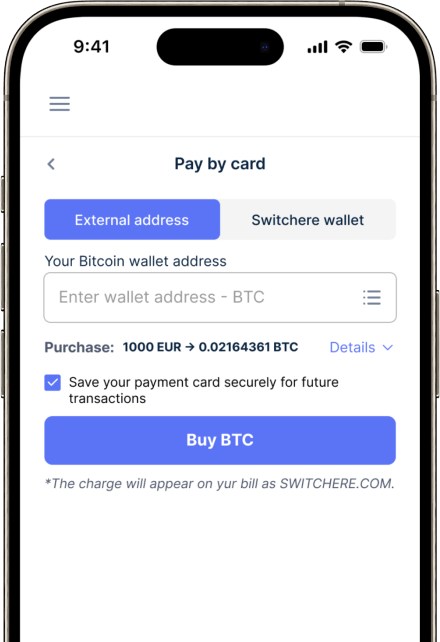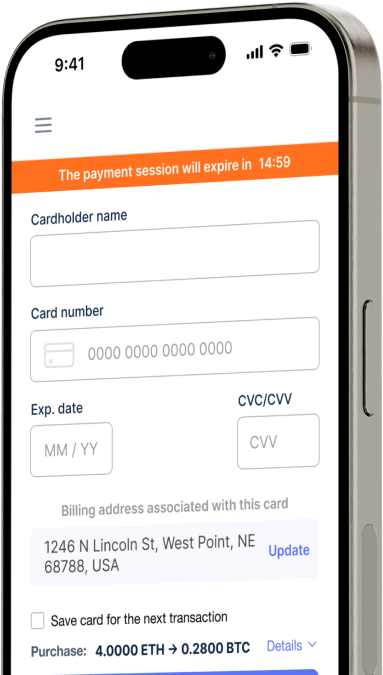Konvertieren
Chilean peso (CLP) zu Dogecoin (DOGE) Sofort
Kaufen Sie Dogecoin (DOGE) mit Chilean peso (CLP) einfach bei Switchere und profitieren Sie von schnellen und sicheren Transaktionen.
Über
Dogecoin (DOGE)
Dogecoin (DOGE) ist eine Peer-to-Peer-Open-Source-Kryptowährung, die als verspielter Meme-Token begann, sich aber schnell zu einem prominenten digitalen Vermögenswert mit einer engagierten Community entwickelte. Ursprünglich wurde Dogecoin 2013 von den Software-Ingenieuren Billy Markus und Jackson Palmer als witzige Alternative zu Bitcoin ins Leben gerufen und trägt als Logo den Shiba-Inu-Hund aus dem beliebten Meme "Doge". Trotz seiner humorvollen Ursprünge ist DOGE für seine schnellen Transaktionsgeschwindigkeiten, niedrigen Gebühren und seine Zugänglichkeit bekannt geworden, was ihn zu einer beliebten Wahl für Mikrotransaktionen und Online-Tipps gemacht hat. Das Dogecoin-Ökosystem wird von einer lebendigen und hilfsbereiten Gemeinschaft angetrieben, die DOGE für wohltätige Zwecke, Online-Fundraising und Sensibilisierungskampagnen einsetzt. Mit der Unterstützung hochkarätiger Persönlichkeiten und Integrationen in Plattformen wie Teslas Merchandise-Shop hat Dogecoin es geschafft, sowohl als kulturelles Phänomen als auch als funktionale digitale Währung relevant zu bleiben, was das Potenzial von Meme-Münzen in der breiteren Kryptowährungslandschaft unterstreicht.
Andere 150+ Kryptowährungen für Chilean peso (CLP) kaufen
Andere Münzen für Chilean peso (CLP)
-
CLP zu ZRX
-
CLP zu 1INCH
-
CLP zu AAVE
-
CLP zu ACH
-
CLP zu ALGO
-
CLP zu TLM
-
CLP zu ANKR
-
CLP zu APE
-
CLP zu NFT
-
CLP zu API3
-
CLP zu APT
-
CLP zu ARPA
-
CLP zu AUDIO
-
CLP zu AVAX
-
CLP zu AVAX
-
CLP zu AXS
-
CLP zu BADGER
-
CLP zu BAL
-
CLP zu BNT
-
CLP zu BAT
-
CLP zu BNB
-
CLP zu BSW
-
CLP zu BSV
-
CLP zu BLUR
-
CLP zu BONE
-
CLP zu CTSI
-
CLP zu CELR
-
CLP zu CELO
-
CLP zu CEL
-
CLP zu LINK
-
CLP zu CHZ
-
CLP zu CHR
-
CLP zu C98
-
CLP zu COMP
-
CLP zu CFX
-
CLP zu PEOPLE
-
CLP zu CVX
-
CLP zu ATOM
-
CLP zu CTC
-
CLP zu CRV
-
CLP zu DAI
-
CLP zu DASH
-
CLP zu MANA
-
CLP zu DENT
-
CLP zu DGB
-
CLP zu DYDX
-
CLP zu XEC
-
CLP zu EOS
-
CLP zu ETC
-
CLP zu ENS
-
CLP zu ETHW
-
CLP zu FET
-
CLP zu FIL
-
CLP zu FLOKI
-
CLP zu GALA
-
CLP zu GNO
-
CLP zu ONE
-
CLP zu HBAR
-
CLP zu HOT
-
CLP zu HOOK
-
CLP zu ICX
-
CLP zu ILV
-
CLP zu IMX
-
CLP zu INJ
-
CLP zu ICP
-
CLP zu IOST
-
CLP zu IOTX
-
CLP zu JASMY
-
CLP zu JST
-
CLP zu KAVA
-
CLP zu KCS
-
CLP zu KSM
-
CLP zu KNC
-
CLP zu LDO
-
CLP zu LQTY
-
CLP zu LPT
-
CLP zu LOOKS
-
CLP zu LRC
-
CLP zu LUNA
-
CLP zu MKR
-
CLP zu MASK
-
CLP zu EGLD
-
CLP zu ALICE
-
CLP zu NEAR
-
CLP zu XEM
-
CLP zu NEXO
-
CLP zu NOT
-
CLP zu NMR
-
CLP zu OKB
-
CLP zu OMG
-
CLP zu ONT
-
CLP zu EDU
-
CLP zu OP
-
CLP zu OGN
-
CLP zu CAKE
-
CLP zu PAXG
-
CLP zu PENDLE
-
CLP zu DOT
-
CLP zu POL
-
CLP zu QTUM
-
CLP zu QNT
-
CLP zu RDNT
-
CLP zu XRD
-
CLP zu RVN
-
CLP zu REN
-
CLP zu RSR
-
CLP zu RLC
-
CLP zu RPL
-
CLP zu SFP
-
CLP zu SHIB
-
CLP zu SKL
-
CLP zu SXP
-
CLP zu STND
-
CLP zu STG
-
CLP zu XLM
-
CLP zu GMT
-
CLP zu STORJ
-
CLP zu STMX
-
CLP zu SUSHI
-
CLP zu SNX
-
CLP zu USDT (Polygon)
-
CLP zu USDT (AVAC)
-
CLP zu USDT (BEP20)
-
CLP zu USDT (ERC20)
-
CLP zu USDT (SPL)
-
CLP zu USDT (NEP141)
-
CLP zu USDT (FA2)
-
CLP zu USDT (TRC20)
-
CLP zu USDT (JETTON)
-
CLP zu XTZ
-
CLP zu GRT
-
CLP zu SAND
-
CLP zu TFUEL
-
CLP zu THETA
-
CLP zu RUNE
-
CLP zu TON
-
CLP zu TUSD (BEP20)
-
CLP zu TUSD (TRC20)
-
CLP zu TWT
-
CLP zu UOS
-
CLP zu UMA
-
CLP zu UNI
-
CLP zu USDC (Polygon)
-
CLP zu USDC (SPL)
-
CLP zu USDC (OP)
-
CLP zu USDC (BEP20)
-
CLP zu USDC (AVAC)
-
CLP zu USDC (ARB)
-
CLP zu USDC (ERC20)
-
CLP zu VET
-
CLP zu VRA
-
CLP zu WAXP
-
CLP zu WOO
-
CLP zu WLD
-
CLP zu WBTC
-
CLP zu WMINIMA
-
CLP zu XDC
-
CLP zu YFI
-
CLP zu YGG
-
CLP zu ZIL
Wie man Dogecoin (DOGE) kauft
Häufig gestellte Fragen
-
Was ist die gebräuchlichste Methode, um Dogecoin (DOGE) mit chilenischen Pesos (CLP) zu kaufen?
Die gebräuchlichste Methode ist die Nutzung einer Kryptowährungsbörse, die als Fiat-On-Ramp in Chile fungiert. Benutzer durchlaufen in der Regel eine KYC/AML-Überprüfung und zahlen dann CLP über lokale Zahlungsmethoden wie Banküberweisungen (Transferencia Bancaria) oder WebPay ein. Sobald die CLP auf ihrem Konto sind, können sie DOGE kaufen, oft indem sie zuerst ein großes digitales Asset wie BTC oder einen Stablecoin kaufen und diesen dann gegen Dogecoin tauschen.
-
Welche technischen Aspekte machen Dogecoin (DOGE), einen Meme-Coin, für Transaktionen geeignet?
Trotz seines Ursprungs als 'Meme-Coin' hat Dogecoin technische Vorzüge für Transaktionen. Es arbeitet auf einer Proof-of-Work-Blockchain mit dem Scrypt-Algorithmus, der schnellere Blockzeiten (ungefähr 1 Minute) im Vergleich zu Bitcoin ermöglicht. Dies, kombiniert mit seinen historisch niedrigen Transaktionsgebühren, macht es effizient für Mikrotransaktionen und Online-Trinkgelder, ein Kernstück seiner von der Community getragenen Kultur.
-
Was sind die typischen Gebühren bei einer CLP-zu-DOGE-Blockchain-Transaktion?
Die Gesamtkosten umfassen mehrere Gebühren. Erstens kann die Börse eine Einzahlungsgebühr für CLP erheben. Zweitens gibt es eine Handelsgebühr (Maker/Taker-Gebühr) für die Ausführung des Handels auf der Plattform. Schließlich, wenn Sie Ihre DOGE in eine persönliche digitale Geldbörse abheben, zahlen Sie die Transaktionsgebühr des Dogecoin-Netzwerks. Diese Netzwerkgebühr ist ein Hauptmerkmal von Dogecoin, da sie sehr niedrig konzipiert ist, was den digitalen Vermögenswert kostengünstig macht, um ihn in seinem öffentlichen Hauptbuch zu bewegen.
-
Sind direkte CLP/DOGE-Handelspaare an Krypto-Börsen üblich?
Direkte CLP/DOGE-Handelspaare sind relativ selten. Die meisten globalen und lokalen Börsen bieten eine höhere Liquidität für Paare wie DOGE/USDT oder DOGE/BTC. Daher ist das Standardverfahren eine zweistufige Transaktion: Zuerst CLP in einen weit verbreiteten Stablecoin (wie USDT) oder Bitcoin umwandeln und dann dieses Asset verwenden, um es im Orderbuch der Börse gegen DOGE zu handeln.
-
Welche Art von digitaler Geldbörse eignet sich am besten zur Aufbewahrung von DOGE nach einem Kauf mit CLP?
Für eine sichere, langfristige Aufbewahrung nach dem Erwerb von DOGE über eine Fiat-On-Ramp wird eine nicht-verwahrende Wallet empfohlen. Dies gibt Ihnen die volle Kontrolle über Ihre privaten Schlüssel. Zu den Optionen gehören die offizielle Dogecoin Core Desktop-Wallet, seriöse Multi-Währungs-Mobile-Wallets oder eine Hardware-Wallet für das höchste Maß an Sicherheit gegen Online-Bedrohungen. Es wird generell davon abgeraten, große Beträge in der Depot-Wallet einer Börse zu belassen.
-
Ist die Einhaltung von KYC obligatorisch, wenn chilenische Pesos für den Kauf eines digitalen Vermögenswerts wie Dogecoin verwendet werden?
Ja, für jede seriöse Kryptowährungsbörse, die als Fiat-On-Ramp in Chile tätig ist, ist die Einhaltung von KYC (Know Your Customer) und AML (Anti-Money Laundering) obligatorisch. Um Ihr Bankkonto zu verbinden und CLP einzuzahlen, müssen Sie Ihre Identität durch die Vorlage offizieller Dokumente wie Ihrer RUT (Rol Único Tributario) und eines Adressnachweises überprüfen, um die Finanzvorschriften einzuhalten.




